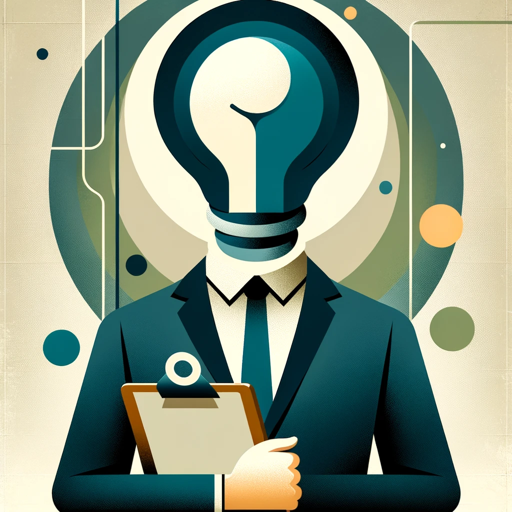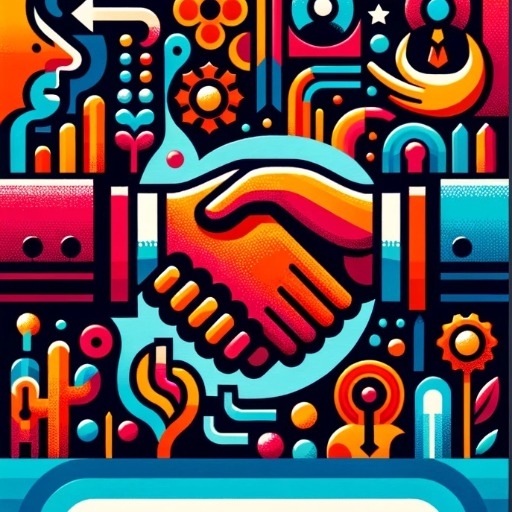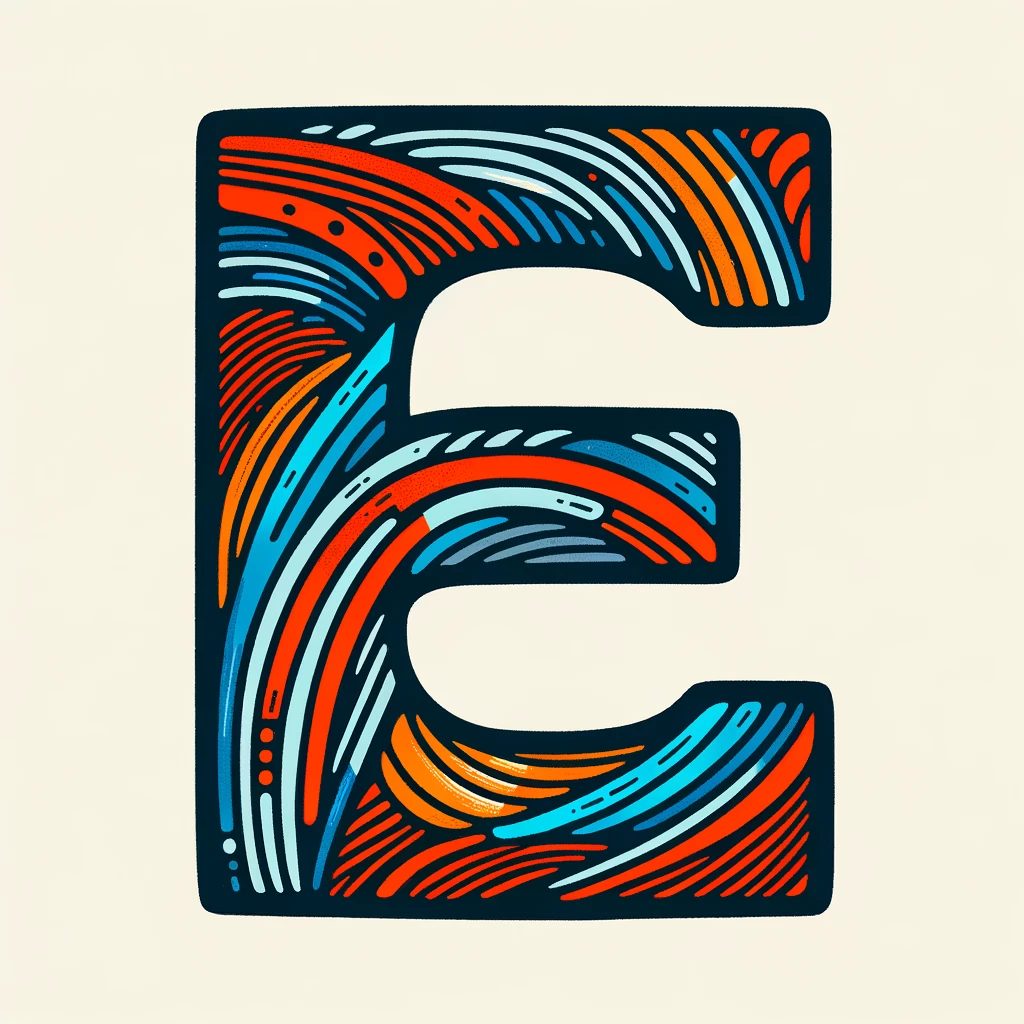Product Sense Interview-product sense interview guide.
AI-powered tool for product interview mastery.
How should I approach identifying user needs for Meta?
Can you guide me through mapping a user journey for Meta?
How do I prioritize solutions in Meta's Product Sense interview?
What are Meta's strengths I should consider in solution ideation?
Related Tools
Load MoreMaster Interview🚀
🎯 Provides real interview question practices based on companies, 📈 and gives feedback tailored to your background to assist you in impressing the interviewer. 👔✨📅 Next Interview, 🏆 Next Offer.

Interview 💫
🔴𝐁𝐚𝐬𝐞𝐝 𝐨𝐧 𝐌𝐲 𝟏𝟏 𝐘𝐞𝐚𝐫𝐬 𝐨𝐟 𝐈𝐧𝐭𝐞𝐫𝐯𝐢𝐞𝐰 𝐏𝐫𝐞𝐩 𝐄𝐱𝐩𝐞𝐫𝐢𝐞𝐧𝐜𝐞🔴 Job interview, school interview, tech interview, SSB interview & coding interview preparation.

Interview
🔴#𝟏 𝐈𝐧𝐭𝐞𝐫𝐯𝐢𝐞𝐰 𝐏𝐫𝐞𝐩𝐚𝐫𝐚𝐭𝐢𝐨𝐧 𝐓𝐨𝐨𝐥🔴

Product Management Interview Expert
GPT built for PM interviews, covering Analytical, Product Sense, Estimation and Technical questions. GPT will provide you answers to most asked PM interview questions. Curated by Product Manager - Sri Laxmi.
Interview Coach
Job interview coach provides mock interview practices and feedback

Interview
Land that dream job with Interview Helper: practice your responses, receive tailored feedback, and refine your approach for success!
20.0 / 5 (200 votes)
Introduction to Product Sense Interview
The Product Sense Interview is designed to help individuals prepare for product management interviews, particularly at top technology companies like Meta, Google, and Amazon. The interview focuses on evaluating a candidate’s ability to think critically about product design, user needs, business goals, and market alignment. Candidates are expected to demonstrate a holistic understanding of product development from ideation to execution, ensuring alignment with company missions, solving user problems, and balancing trade-offs. For example, in a typical scenario, candidates might be asked to design a new feature for Facebook’s News Feed or improve Google Maps’ user engagement. The purpose is to test the candidate’s capacity for innovation, problem-solving, and strategic decision-making in real-world situations.

Main Functions of Product Sense Interview
Clarifying Questions
Example
In a product interview, candidates are encouraged to ask clarifying questions to ensure they understand the problem. This helps define constraints and user needs before jumping into solutions.
Scenario
In a Meta product interview, a candidate might be asked to design a feature for Instagram. They could ask clarifying questions like, 'Are we focusing on a particular user demographic?' or 'Is the goal to drive engagement or increase time spent on the platform?' These questions help frame the challenge.
User Segmentation and Persona Creation
Example
Understanding the target users is crucial for product design. Candidates need to segment users and create personas based on age, usage patterns, or specific needs.
Scenario
In a Google interview, a candidate asked to redesign YouTube’s comment system could segment users into content creators, casual viewers, and power users. Each group has different needs—content creators want moderation tools, while casual viewers want simple interactions.
Prioritization and Trade-offs
Example
Product managers need to make tough decisions about which features to prioritize. Candidates must show their ability to evaluate trade-offs and justify their decisions.
Scenario
In a scenario where a candidate is tasked with designing a new e-commerce app feature, they might need to prioritize adding a 'one-click purchase' feature over a social-sharing option, justifying it by the impact on conversion rates and revenue.
Ideal Users of Product Sense Interview Services
Aspiring Product Managers
This group consists of individuals who are preparing for product management interviews at tech companies. They benefit from Product Sense Interview’s detailed preparation strategies, which guide them through problem-solving frameworks, user-centric design, and decision-making skills.
Experienced Product Managers Seeking Career Growth
Mid-level or senior product managers looking to transition to top-tier companies like Meta or Google use Product Sense Interview services to sharpen their skills in aligning product ideas with business goals, navigating complex trade-offs, and crafting MVPs (Minimum Viable Products) to demonstrate their expertise in managing product lifecycles.

How to Use Product Sense Interview
Visit aichatonline.org for a free trial without login or ChatGPT Plus.
Access the tool directly from the website without the need for any login or subscription, allowing users to test it out immediately.
Understand the interview context.
Familiarize yourself with the structure of product sense interviews, often used by companies like Meta and Google, to frame your responses and questions accurately.
Input your product or design challenge.
Describe the product or feature idea, provide specific constraints or market focus, and clarify the target user base so the tool can assist in crafting the best responses.
Receive step-by-step guidance.
Use the provided framework to explore product alignment, user segmentation, solution brainstorming, and prioritization—all essential for a successful product design interview.
Refine your answers and iterate.
Review the recommendations and refine your strategy. Leverage customer feedback and trade-off analysis to prepare for the interview's critical thinking components.
Try other advanced and practical GPTs
Mentor Empresarial IA Familias Empresarias
AI-powered guidance for business transformation.

PPT Smith
AI-Powered Presentation and Content Tool

Soul Painter Soulpainting
Discover your soul through AI-powered art

to Eng
AI-powered English enhancement tool

To Nhat GPT
AI-powered tool for creative solutions.

Audio to Text to Excerpt
AI-powered transcription and summarization

Wisdom GPT
AI-powered wisdom for deeper insights

MCTS 助理
AI-powered insights for better decisions.

Podcast Show Notes Writer by NextGen Podcaster
AI-Powered Show Notes for Podcasters

CELPIP Writing Examiner
AI-powered writing feedback for CELPIP success.

Nursing School Mentor
AI-powered RN education assistant

PDF Editor
AI-Powered PDF Editing Made Easy

- Business Strategy
- Interview Prep
- Product Design
- User Research
- Solution Ideation
Detailed Q&A About Product Sense Interview
What is the main purpose of Product Sense Interview?
The tool is designed to help users prepare for product sense interviews by guiding them through key components like aligning a product idea with business goals, segmenting users, and designing solutions that fit real-world problems.
How does the tool help with user segmentation?
Product Sense Interview provides detailed frameworks to help users break down their audience into actionable segments, analyzing behavior, needs, pain points, and motivations to create targeted, effective solutions.
Can this tool help me brainstorm solutions for my product?
Yes, it helps generate multiple solution ideas based on user needs and pain points. The tool evaluates and prioritizes solutions, giving clear recommendations for MVP development.
What type of interviews is this tool optimized for?
The tool is ideal for product sense and design interviews used by companies like Meta and Google, where candidates are required to think critically about product strategy, user-centric design, and market opportunities.
How can this tool improve my answers during product interviews?
By following the structured approach the tool offers, you can ensure your answers are comprehensive, addressing key aspects like company mission, business goals, user needs, and solution effectiveness.